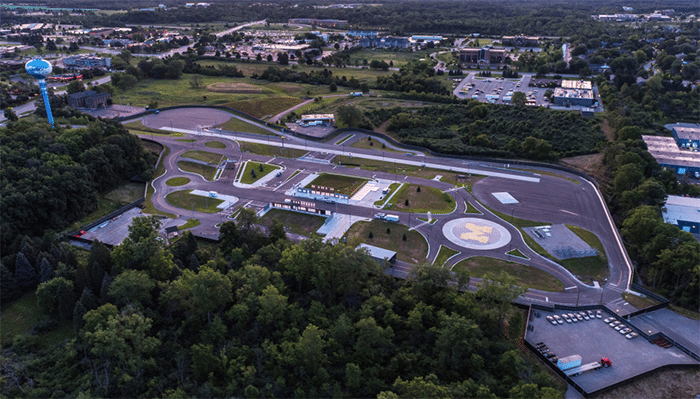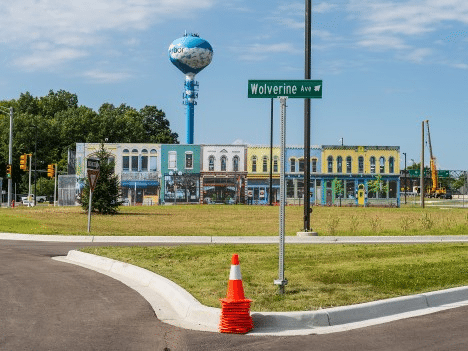
Efforts led by Google and joined by a number of companies in the auto industry have been building and testing self-driving cars, mostly in California. It’s a fascinating experiment but it’s going to be quite a while before these robotic cars that drive themselves become common, let alone commercial.
Still, the new automatic cars are only part of the changes that are likely. Mcity, a big startup by the University of Michigan, is more likely to produce improvement in the near term for cars. The key is a 32-acre test zone created in the university’s northern campus, a fake and unpopulated town for testing vehicles. Cars that drive themselves are only part of the experiment. Much more important is building cars that take advantage of technology to make driving safer.
Part of the experiment is self-driving cars. For example, auto parts manufacturer Delphi has supplied an automated Audi SQ5 SUV. Qualcomm is demonstrating its Halo technology designed to charge electric cars, through chargers while parked, without cables, and while driving on roads with built-in power distribution. Companies including Verizon and Xerox, as well as traditional auto system operations such as DENSO and Bosch are involved with car manufacturers.
A lot of the research is working on technology that will produce improvements to car behavior in the near term. One of the ways to improve the behavior of vehicles is with V2x communication, which increases the control of vehicles. V2V—vehicle to-vehicle–is the farthest along. Each car, of course, already has systems that collect information on speed, direction, motion, timing, and everything else that reflects the vehicle’s performance and intention. However, there is currently no way to do anything with the information off the vehicle.
 V2V is based on radio systems that allow the cars to communicate with each other while in motion. It uses a relatively low-powered communication protocol so the car can share its information with other vehicles, either directly or through a cloud link. Each individual vehicle can behave better because it knows what its neighbors are doing on the road.
V2V is based on radio systems that allow the cars to communicate with each other while in motion. It uses a relatively low-powered communication protocol so the car can share its information with other vehicles, either directly or through a cloud link. Each individual vehicle can behave better because it knows what its neighbors are doing on the road.
Dirk Wollschlaeger, general manager of IBM Global Automotive Industry says:
What does that add up to practically? A car linked to the cloud, tapping into your apps, devices, and preferences will tailor the driving experience to you. When you’re getting ready to go out in the morning, your car will link to the cloud and check the weather, your to-do list from your calendar, and the traffic to help you plan your route for the day, rerouting you when you’re on your way if you get behind schedule or run into traffic. Or a rental car would recognize you when you slip into the driver’s seat and automatically adjusts to your preferences — changing the mirrors, giving you an update from your calendar of your schedule, and lining up your iTunes playlist.
The Mcity experiment will build on being V2V with additional services such as V2I, which creates improved communication with the infrastructure, and V2P, a further down the road approach that will allow cars to communicate directly with pedestrians for safety. The advantages of these approaches will be limited until they are included in a large volume of vehicles—in theory, of course, all—but the federal government is already moving toward requiring V2V.
Other trials are also in the Mcity works. For example, the university robotics expert Edwin Olsen is building low-speed robot vehicles for driving people around the territory, providing convenience without endangering others.
Overall, the space of Mcity, though a very small town, should provide the capacity for a lot of improved transportation technology development—and provide development toward the next generation of self-powered vehicles.

This is my first time pay a quick visit at here and i am really happy to read everthing at one place
Pretty! This has been a really wonderful post. Many thanks for providing these details.